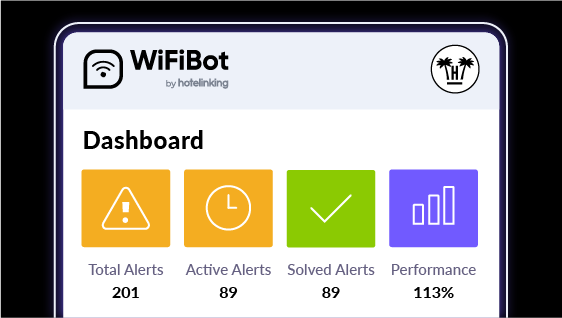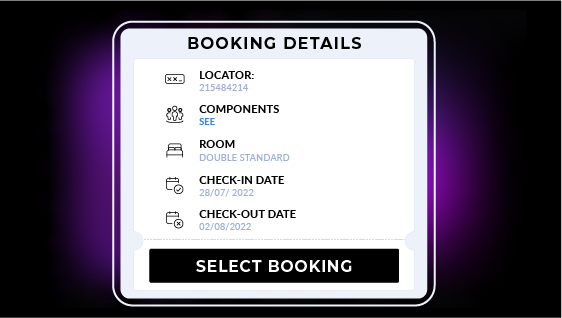
Email Marketing Guide: What is the ideal frequency for sending email marketing campaigns?
The frequency of sending email campaigns is crucial to the success of your hotel marketing strategy.
Whenever we think about email marketing strategies, a concern arises immediately: we do not want to send too many campaigns for our customers to unsubscribe from our email campaigns and also leave a bad impression as a hotel brand.
After all the planning, creating the email design and copies, and preparing mailings in different languages, it is normal for this kind of concern to arise. The important thing is to know exactly what is too frequent and what is not.
When it comes to hotel email marketing, the most valuable metric is the sale or tracked reservation after a campaign is sent. Analysing in our systems the last 6 thousand bookings generated after sending hundreds of campaigns for multiple hotel chains, we have been able to compile a set of very interesting conclusions.
The importance of the mailing frequency
Each guest has different booking habits, either because of their holiday cycles, because they are a last-minute travelleror plan their getaways well in advance, react positively to the best deals, or just a combination of all.
Therefore, it is advisable to send a campaign at least once a month and up to seven to match the email marketing campaign with each guest’s reservation cycle. It would not be a good strategy to concentrate 8-10 campaigns to be sent between October and January, for example, as we would be missing all those potential repeat guests whose reservation habits are not within that specific time period.
The criterion of sending at least 12 per year, but a maximum of 84, does not mean that the same recipient could receive all of them. Actually, the impact per-user limit recommendation is up to 12-20 times over a year, as long as they have not reserved. Those users who have reserved should not be impacted again in the same year (except for urban hotels’ national repeat guests, with booking habits greater than 3-4 per year).
TIP: It is vital to have a hotel CRM that allows you to easily exclude from future email marketing campaigns those customers who have already booked in the last 3, 6, 9 or 12 months.
When a user has recently reserved, and is not expected to re-reserve because of the type of hotel or destination, it is essential that they are not included in any campaign scheduled in the coming months or else it could result in an unsubscription.
In those cases where the CRM is not integrated with the booking engine, the sale can hardly be tracked with each recipient of the campaign, avoiding any future exclusion due to lack of information in the CRM.
60 % of the recipients who reserved after the impact of a campaign had previously received five campaigns on average.
Sending only 4-5 campaigns a year is extremely negative for any hotel group’s interests. There is no apparent reason to remain cautious about the number of mailings, opposed to widespread beliefs in the sector. Users who reserve through email marketing impacts generally do so after receiving multiple campaigns. One of the explanations for such behaviour responds on the one hand to the degree of trust with the hotel brand that the user acquires impact after impact, and, on the other hand, to the ideal campaign mailing time aligned with the guest’s booking cycle.
The unsubscription fear
It is completely normal to receive unsubscriptions from email marketing campaigns. It is not a negative thing and should not always be blamed on a disproportionate mailing frequency. In fact, the vast majority of users who cancel, do so after receiving the first communication. The explanation can be very varied, but it is usually due to the low degree of satisfaction after their stay or simply not having to travel back to the destination in the near future.
As a reference, those hotel groups that decided to send less than five campaigns in 12 months experienced cancellation percentages very similar to those that sent more than 20 campaigns. A totally acceptable and normal percentage of cancellations over the total existing database in the CRM is around 5 %.
Good practices
- Sending a minimum of one campaign per month and up to eight. If, for example, in November we plan to send the Black Friday campaign in four languages, it does not count as four but as one campaign. In other words, a Spanish recipient would not receive four campaigns but only one.
- A user should receive at least one campaign per month, with a total of 12 per year and no more than 20. While, as a marketing strategy we may be sending up to 84 campaigns in a single year, not all campaigns should be sent to all users. Hyper-segmentation is key, and so is the data we have of each user. Generalist promotional campaigns (Black Friday, Valentine’s Day, Easter) must be combined with highly segmented campaigns (national holidays both at destination and origin, special campaigns of the hotel brand itself, last-minute,…).
- The hotel CRM should have a feature to exclude easily and automatically all those recipients who have reserved through a campaign.
- Each campaign submitted must be relevant and of value. If the recipient perceives that we are not sending campaigns with relevant content, we will be at risk of unsubscription. All private sales campaigns, with offers and discounts that cannot be found on OTAs or other commissioned channels, are campaigns with relevant content.
- Personalising both the treatment and the content. The more general the campaigns, the less relevant they will seem to the recipient. On many occasions, due to lack of resources it is decided that 5-10 general campaigns will be sent throughout the year. Customisation and hyper-segmentation bring dedication and focus, but the benefits are numerous, including: an active database with low cancellation percentage, and a high sales conversion rate. A campaign exclusively sent to Swedish users offering a private sale for a weekend getaway at the end of June on the occasion of the “Midsommar” bank holiday is a magnificent example.
In the next article we will address another of the concerns related to the mailing: the time of the day. As we will see, finding the most suitable timing will depend on the region, industry, type of customer and content being sent. However, we offer some helpful guidelines that you can apply.








